The spikelet pattern resembles a knitted elastic band. It is also elastic, but looks more decorative. The pattern is suitable for knitting women's items: sweaters, hats and scarves, vests, cardigans and more. The patterns are easy to understand if you follow the description and step-by-step instructions for making a spikelet.
Reading knitting patterns with knitting needles
The instructions use abbreviations – shortened names of knitting elements:
| Abbreviation | Transcript |
| P | Loop |
| IP | Purl stitch |
| LP | Face loop |
| VP | Extended loop |
| R | Row |
| KRP | Edge loop |
Rapport is the width of one element of a pattern (from the beginning of a pattern step to the end).
Spikelet-elastic pattern
The pattern rapport can be of 2 types: 5 P for circular knitting or 5+3+2 P when working in the technique of turning rows (5 P is the width of the pattern, 3 P for the symmetry of the fabric, 2 P - edge). First, you need to cast on any number of loops on the knitting needles that is divisible by 5.

Algorithm for knitting the pattern (in the example, 30 stitches are cast on to the needles):
- 1-4 R: KrP, make a simple elastic band: 3 LP x 2 IP to the end of the row, the last one is KrP. On the wrong side, follow the pattern: knit over LP, purl over IP.

- 5 R: KrP, then repeat to the end of the row: *insert the needle into the middle P of the first row of the column from the front surface, pull out a long free P, 3 LP, insert the needle again into the same hole and pull out P, 2 IP*, KrP. After this row, there will be almost twice as many loops in the work as there were at the beginning, but this is how it should be.
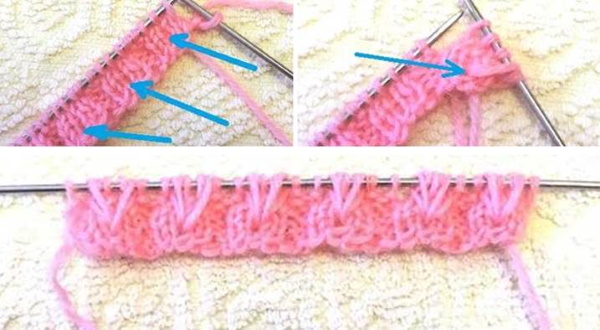
- 6 R: KrP, knit according to the pattern: IP - over purl, LP - over front loops, KrP. When knitting a row, the elongated loops must be transferred to the working needle without knitting. When removing P, the thread should be in front of the work.
- 7 R: KrP, then repeat until the end of the row: *2 P, including the long one, knit together as LP behind the back wall, 1 LP, 2 P, including the long one, knit together as LP behind the front wall, 2 IP*, KrP.
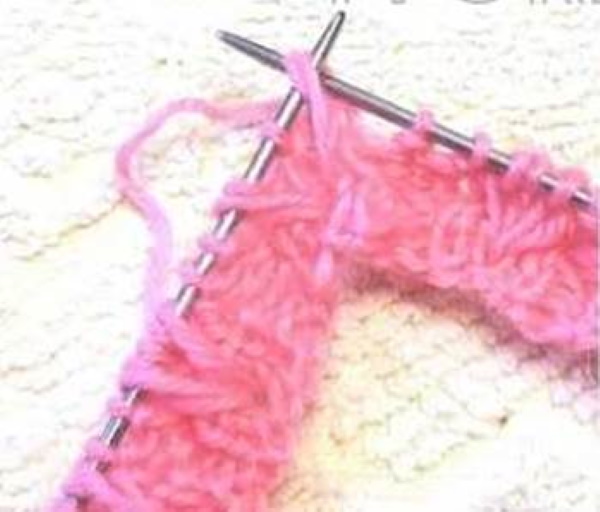
- 8 R: KrP, knit according to the pattern: IP - over purl, LP - over front loops, KrP.

- The following rows are performed similarly to R. 5-8. Knit the fabric to the desired height.
It turns out that the height rapport is 4 rows. A possible difficulty when performing the pattern is to determine the place of insertion of the knitting needle, from where it is necessary to pull out the VP. In order not to get confused, you do not need to constantly count the number of knitted rows. It is necessary to visually mark the loop of insertion of the knitting needle and visually remember its location. It is located immediately above the previous loop in the bottom row, which should be used as a guide.
The spikelet pattern is suitable for decorating the main part of the fabric, as well as for edging sleeves, the bottom of sweaters and dresses, snoods and scarves.
Geometric spikelet
The "Spikelet" pattern with knitting needles (the diagram and description can be used both for knitting in turning rows and in a circle) is made with a rapport of 20 P + 4 P for the edge (2 on each side). That is, the number of loops in the fabric should be divisible by 20 + 4. If knitting is done in turning rows, then you need to cast on 2 more KrP on the knitting needles.
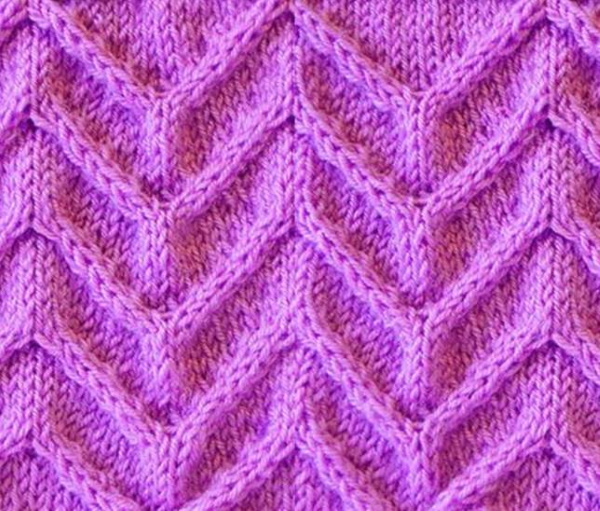
Drawing diagram:

Designations in the diagram:
| Symbol | Reduction | Transcript |
 | LP | Face loop |
 | IP | Purl stitch |
 | PL | Cross left: slip 2 sts onto a free needle in front of work, 2 LP, 2 LP from a spare needle. |
 | PP | Cross right: slip 2 sts onto free needle behind work, 2 LP, 2 LP from spare needle. |
All even rows are knitted according to the pattern.
Knitting instructions:
- Cast on 26 sts: 2 sl sts, 2 sts for the edge on each side and 20 sts for the pattern repeat.
- 1 R: KrP, 2 IP, then repeat, without finishing 3 P at the end of the row: *1 PP, 1 PL, 6 LP*, 2 IP, 1 KrP.
- 2 R: knit according to the pattern: over IP – purl stitches, over LP – knit stitches.
- 3 R: KrP, 2 IP, rapport *4 LP, PP, PL, 4 LP*, 2 IP, KrP.
- 4 R: knit according to the pattern: over IP – purl, over LP – front loops.
- 5 R: KrP, 2 IP, rapport *2 LP, PP, 8 LP, PL, 2 LP*, 2 IP, KrP.
- 6 R: knit according to the pattern: over IP – purl loops, over LP – front loops.
- 7 R: KrP, 2 IP, rapport *PP, 12 LP, PL*, 2 IP, KrP.
- 8 R: knit according to the pattern: over IP – purl, over LP – front loops.
8 rows alternate at first until the fabric reaches the desired height.
Woven spikelet
The "Spikelet" pattern in this variation is similar to woven fabric. The pattern is suitable for knitting scarves, sweaters, jumpers and other things for women and men. You can also use it to knit a blanket or bedspread.
What does the front and back side of the fabric look like:
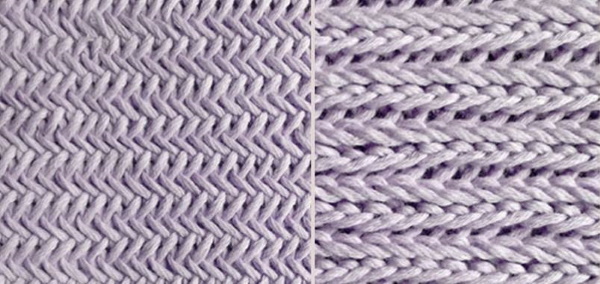
The pattern looks good both in a single-color and multi-color version. The fabric is dense and elastic. The pattern does not depend on the rapport, so you can cast on any number of loops on the needles for knitting in a circle or in turning rows.
Knitting pattern:
- 1 R: KP, rapport *2 P together as LP, remove the first knitted loop, and leave the second on the left needle*, the last loop in the row – KP is knitted as LP.

- 2 R: KrP, rapport: 2 P together as IP, remove the first knitted loop, and leave the second on the left knitting needle*, the last loop in the row - KrP is knitted as IP.
- The subsequent rows alternate as 1 and 2 R, knitting the fabric to the desired length.
When knitting in the round, all LPs are performed. In even and odd rows, they are knitted differently: behind the front or back wall of the loop.
When closing the loops, continue knitting the pattern: knit 2 P together as if knitting, remove one P, and leave the other on the left needle. Do this twice so that 2 P are formed on the needle on the right.
They are closed as usual:
- Knit 2 sts together as if to knit, slip 1 st from left needle.
- Place the previous closing st on the left needle, knit 2 sts together as if they were RS. Repeat closing until there are 2 sts left in the work (1 st on the left needle and 1 st on the right needle).
- Knit the last P behind the back wall, pull it through the P on the right needle.
When you are finished, you need to cut and secure the thread.
Spikelet-hyacinth
The pattern can be used for knitting hats, berets, snoods, jumpers, cardigans, blankets. The pattern is voluminous and elastic.
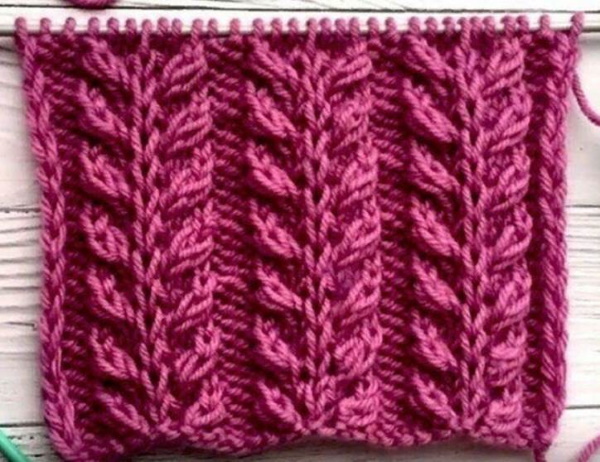
The pattern repeat is 9 loops and 4 rows. To knit in a circle, you need to cast on a number of loops that is a multiple of 9. To work in turning rows, you need to cast on a number of loops that is a multiple of 9 plus 2 edge loops.
Knitting instructions:
- 1 R: KrP, then the rapport: 2 IP, 2 LP, from one P knit 3 LP, then 1 LP, from the next loop another 3 LP, finish the rapport 2 LP*, KrP.
- 2 R: KrP, rapport: *2 IP, remove 7 P onto an additional knitting needle with yarn behind the work, 2 LP*, KrP.
- 3 R: KrP, rapport: *2 IP, cross 5 P with a tilt to the right, 1 LP, cross 5 P with a tilt to the left*, KrP.
- 4 R: KrP, rapport: *2 IP, 3 LP, 1 P remove with yarn behind work, 3 LP*, KrP.
Next, rows alternate from 1 to 4 until the desired height of the fabric is reached.
Spikelet in embroidery style
The pattern repeat is 30 sts. For edge loops, add another 2 sts when casting on.

Knitting pattern diagram:

The diagram shows only the rows of the front side of the fabric. In the back rows, you need to knit the loops according to the pattern: over the IP - purl, over the LP - front loops. All yarn overs are knitted as IP.
Conventional symbols and their interpretation:
| Symbol | Abbreviation | Meaning |
 | IP | Purl stitch |
 | SU | Crossed decrease: Slip 2 sts as if to knit, cross them, make 1 LP and pass it through the slipped sts. |
 | LP | Face loop |
 | ND | Yarn over |
 | Ub3 | Decrease: Knit 3 sts together as if to RS. |
Zigzag spikelet
The "Spikelet" pattern with knitting needles (the diagram and description can be used when knitting women's clothes and decorative textiles) can be done in a circular technique and with turning rows. In this variation, the pattern turns out to be textured. The technique of making inclined loops is used in the work.
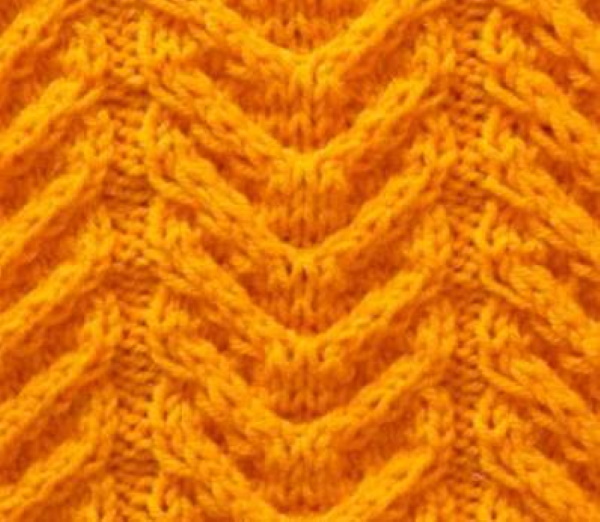
For knitting in turning rows, shuttle needles are used, for working in a circle - circular needles. You will also need 1 additional needle. The fabric is dense, so it is suitable for knitting clothes for autumn or winter. The pattern rapport is 18 P and 6 rows. For symmetry, 2 additional loops and 2 edge loops are cast on. To knit a sample, you only need to cast on 22 P.
Knitting pattern algorithm:
- 1 R (front side): KR, then rapport: *2 IP, LP, remove 7 and 8 P to an additional needle behind the work, 2 LP, knit 2 P from an additional needle as LP, remove 11 and 12 P to an additional needle in front of the work, 2 LP, knit 2 P from an additional needle as LP, 4 LP*, 2 IP, KR.
- 2 R and all following rows of the wrong side: knit according to the pattern (with front loops - LP, with back loops - WP).
- 3 R: KrP, then the rapport: *2 IP, 2 LP, remove 5 and 6 P to a free needle behind the work, 2 LP, knit 2 P from an additional needle as LP, remove 13 and 14 P to an additional needle in front of the work, 2 LP, knit 2 P from an additional needle as LP, 2 LP*, 2 IP, KrP.
- 5 R: KrP, then the rapport: *2 IP, remove 3 and 4 loops onto a free needle behind the work, 2 LP, knit 2 P from an additional needle as LP, 8 LP, remove 15 and 16 P onto an additional needle in front of the work, 2 LP, knit 2 P from an additional needle as LP, 2 LP*, 2 IP, KrP.
Then the pattern is repeated from rows 1 to 6 until the fabric reaches the desired height.
Asian spikelet
The "Spikelet" pattern with knitting needles (the diagram and description of working with the motif may cause difficulties for beginners) is knitted in turning rows. It is suitable for knitting cardigans, coats, vests and other outerwear. The loops for work are not collected horizontally, but vertically. Knitting occurs by width. In the work, special diagrams and patterns are used, without which it will not be possible to make a thing of the right size.

To work, you need knitting needles for large knitting. Beginners will find it more convenient to use tools for circular knitting. The yarn diameter should match the number of knitting needles. To start working, you need to cast on loops, the number of which will be a multiple of 6 (pattern rapport). This will be the length of the fabric.
Stages of knitting a pattern:
- 1 R: 6 LP, turn knitting.
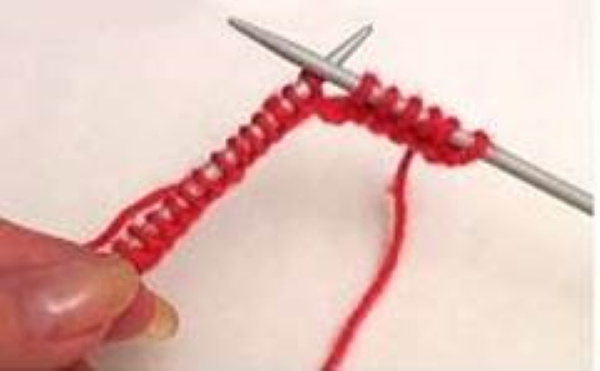
- 2 R: 6 IP, without finishing the row, turn the work.
- 3-10 R: alternate rows made from LP and IP.

- 11 R: 6 LP, 3 LP from the cast on loops, turn the work.
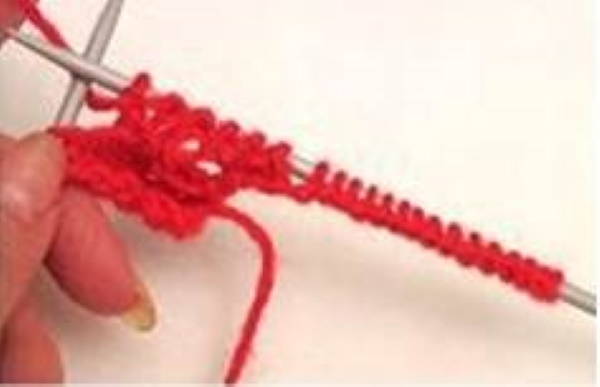
- 12 R: 6 ip, turn work.
- Repeat 10 rows on a block of 6 sts: 3 sts from the previously knitted block and 3 sts from those cast on to the needles.
- The next 2 rows are done in stocking stitch according to the pattern: on the front loops - LP, on the back loops - WP.

All subsequent rows are repeated from the beginning, starting as in the first row. To change the direction of the spikelet, knitting begins from the wrong side of the fabric. For ease of knitting, you can use markers that will help you not to get confused in the arrangement of the motif blocks.
Openwork spikelet
The pattern in this case is openwork but loose. It is used to create decorative clothing and accessories that are not intended to protect against cold weather and wind.
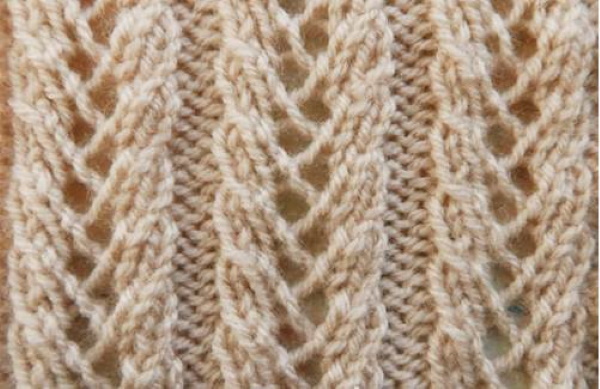
The knitting pattern for the “Spikelet” with knitting needles, the description of which is discussed in the master class, consists of a rapport of 7 P and 4 rows.
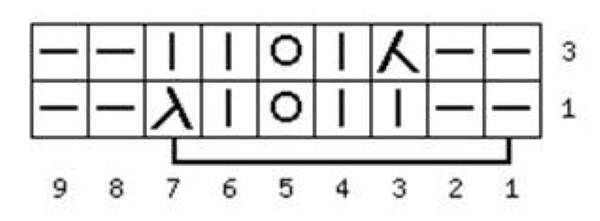
Decoding the diagram:
| Symbol | Abbreviation | Transcript |
 | IP | Purl stitch |
 | LP | Face loop |
 | ND | Yarn over |
 | UbP | Decrease with a right tilt (2 sts knit together as if knitting together) |
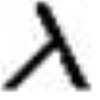 | Ubl | Left-slanted decrease (2 sts knit together as LP) |
The diagram shows 2 front rows. From the back side, knit according to the pattern of the previous row.
Knitting algorithm:
- Cast on a number of stitches that is a multiple of 7, add 2 sts for symmetry and 2 edge stitches.
- 1 R: KrP, then the rapport is performed *2 IP, 2 LP, ND, 1 LP, Ubl* 2 IP, KrP.
- 2 P and all even rows are performed according to the pattern in the same way as the P of the lower row are knitted.
- 3 R: KrP, then the rapport is performed *2 IP, UbP, 1 LP, ND, 2 LP * 2 IP, KrP.
Continue knitting the fabric to the required height, repeating the alternation of rows 1-4.
Lush spikelet
This motif is suitable for decorating any items, knitting decorative bedspreads, blankets. The pattern is used to create hats, snoods, bags, outerwear.
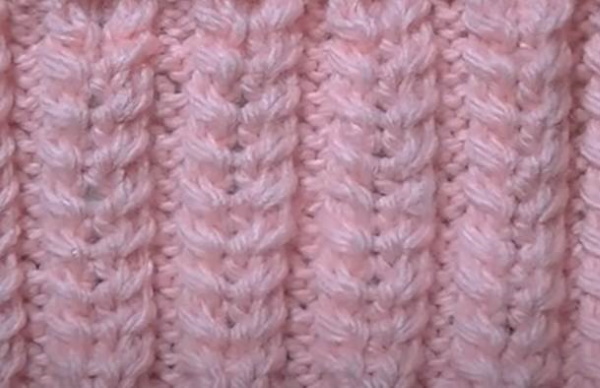
The pattern repeat is 6 sts. When knitting the back of the fabric, follow the pattern of the previous row: over the back loops, make IP, over the front loops - LP.
Algorithm for making a pattern:
- 1 R: knit all loops as LP.
- 2 R: KR, then complete the rapport *2 IP, remove 1 P to a free needle behind the work, 1 LP, 1 LP from an additional needle, remove 1 P in front of the work, 1 LP, 1 LP from a free needle*, KR.
Then rows alternate from 1 to 2 until the fabric reaches the desired height.
Curly spikelet
The "Spikelet" pattern with knitting needles (the diagram and description in the master class are suitable for beginners in knitting) is made with a rapport of 14 P. That is, to begin with, you can cast on any number of loops multiple of 14 + an additional 3 loops for symmetry and 2 KrP. The rapport is repeated upwards for 16 rows.
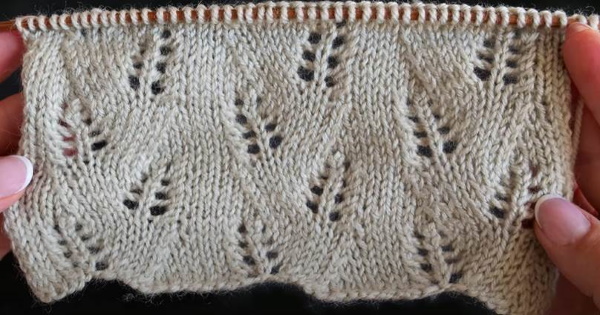
Motive diagram:

Decoding the diagram:
| Symbol | Abbreviation | Transcript |
 | LP | Face loop |
 | ND | Yarn over |
 | UbP | Decrease with a right tilt (2 sts knit together as if knitting together) |
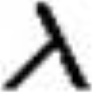 | Ubl | Left-slanted decrease (2 sts knit together as LP) |
Knitting algorithm:
- 1 R (front side): Remove KR, then perform the rapport *6 LP, UbP, 4 LP, ND, 1 LP, ND, UbL, 3 LP*, 3 LP symmetry, KR.
- 2 R: Remove KP, knit all loops as IP to the end of the row.
- 3 R: Remove KrP, then perform the rapport *5 LP, UbP, 4 LP, ND, 1 LP, ND, UbL, 3 LP*, *, 3 LP symmetry, KrP.
- 4 R: Remove KP, knit all loops as IP to the end of the row.
- 5 R: Remove KrP, then perform the rapport *4 LP, UbP, 5 LP, ND, 1 LP, ND, UbL, 3 LP*, 3 LP symmetry, KrP.
- 6 R: Remove KP, knit all loops as IP to the end of the row.
- 7 R: Remove KrP, then perform the rapport *3 LP, UbP, 6 LP, ND, 1 LP, ND, UbL, 3 LP*, 3 LP symmetry, KrP.
- 8 R: Remove KP, knit all loops as IP to the end of the row.
- 9 R: Remove KrP, then perform the rapport *3 LP, UbP, ND, 1 LP, ND, 3 LP, UbL, 6 LP*, 3 LP symmetry, KrP.
- 10 R: Remove KP, knit all loops as IP to the end of the row.
- 11 R: Remove KrP, then perform the rapport *3 LP, UbP, ND, 1 LP, ND, 4 LP, UbL, 5 LP*, 3 LP symmetry, KrP.
- 12 R: Remove KP, knit all loops as IP to the end of the row.
- 13 R: Remove KrP, then perform the rapport *3 LP, UbP, ND, 1 LP, ND, 5 LP, UbL, 4 LP*, 3 LP symmetry, KrP.
- 14 R: Remove KP, knit all loops as IP to the end of the row.
- 15 R: Remove KrP, then perform the rapport *3 LP, UbP, ND, 1 LP, ND, 6 LP, UbL, 3 LP*, 3 LP symmetry, KrP.
- 16 R: Remove KP, knit all loops as IP to the end of the row.
To knit the fabric higher, the rows are repeated again, starting from the first.
Convex spikelet
To make the pattern, you need to cast on a number of loops on the knitting needles that is a multiple of 4 and 3 additional loops. The base of the fabric is knitted with purl loops.
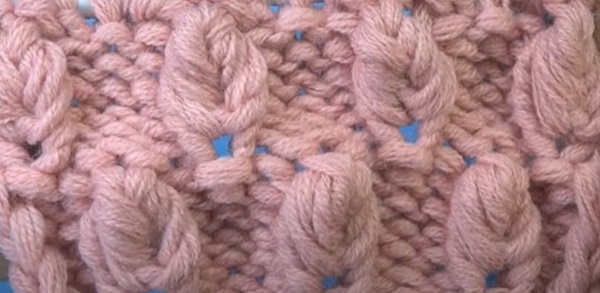
Knitting algorithm:
- 1 R: KR, 2 IP, repeat to the end of the row *1 LP, 3 IP*, KR.
- 2 R: knit a row according to the pattern: over the front loops - LP, over the back loops - IP.
- 3-6 R: repeat alternating even and odd rows to create a 3x1 elastic band.

- 7 R: KrP, 2 IP, then knit a convex spikelet: *count 5 P down the line from the LP, insert the knitting needle into the found loop, grab the working thread and knit the extended loop as LP, then insert the knitting needle into the LP of the 4th row, also knit 1 LP, then also knit 1 LP in the 3rd, 2nd and 1st rows. Next knit 1 LP from the main row. Insert the left knitting needle into the first extended (longest) loop and pull all the extended P from the right knitting needle through it. Next, insert the knitting needle on the left under the 4th extended loop and again pull all the P of the pattern from the right knitting needle. Do the same for the 3rd and 2nd extended loops*. Next, knit 3 IP from the main loops of the row, and in the next column from the LP knit a spikelet according to the rapport. In each column from the LP, complete the pattern until the end of the row.
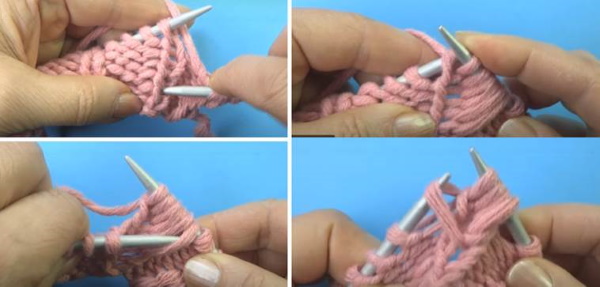
- 8 R: KrP, to the end of the row rapport *1 IP, 3 LP*, last loop – IP.

- 9-13 R: knit rows according to the pattern: over knit stitches – LP, over purl stitches – IP.

- 14 R: Repeat the pattern as in row 7. Only the elements of the motif will be staggered in relation to the previous ones.
- 15 R: KR, 2 IP, rapport to the end of the row *1 LP, 3 IP*, KR.
- 16-20 R: knit rows according to the pattern: over the front loops - LP, over the back loops - IP.
The motif is repeated every 6 rows to the desired height of the fabric, only the arrangement of its elements changes. You can knit the "Spikelet" pattern with knitting needles in different variations according to simple descriptions of master classes. It looks impressive both in volumetric and openwork versions. Its patterns are often used for knitting sweaters, cardigans, hats and dresses. This knitting can be combined with other patterns to achieve original combinations of motifs.
Video on how to make a spikelet pattern with knitting needles
How to make a pattern from spikelets:
